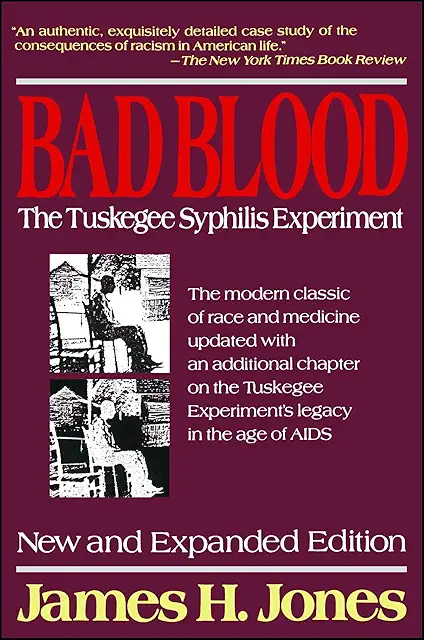My recent post, “A Practical Guide to the Book of Mormon’s Most Neglected Theme, Secret Combinations,” examined the Book of Mormon’s teachings on “secret combinations” and how they are a a far cry from the world’s caricature of wild “conspiracy theories.” Among many possible examples that could be considered as relevant modern case studies, I’d like to share one well-documented example of corrupt collusion that should not be overly controversial today since it is not closely tied to any particular political party. My intent is to illustrate how easily secret combinations can grow to involve many people, even those we might consider as good, ordinary people who became influenced by conflicts of interest or peer pressure. Let’s briefly recall the “secret combination” aspects of the infamous Tuskegee Experiment.
 As a young professor early in my career, my work once took me to the campus of Tuskegee University in Tuskegee, Alabama. There I stopped and pondered sadly at a memorial to the victims of a painful “work of darkness” in American history. This unethical and racist project, officially known as the Tuskegee Study of Untreated Syphilis in the Negro Male, involved some of America’s leading health experts and many health workers, plus over 400 Black men with syphilis who thought they were receiving medical treatment, when they were receiving no medical treatment at all. They were part of a cruel experiment to get data on how syphilis progresses and what it does to Black men when left untreated. This tragedy went on for decades, from 1932 to 1972, continuing long after effective treatments for syphilis such as penicillin had been developed. Those men were denied treatment by the government they trusted and that pretended to be giving them care. The details of the study are documented by James H. Jones, Professor Emeritus of History at the University of Arkansas, in Bad Blood: The Tuskegee Syphilis Experiment, revised edition (New York: The Free Press, 1993).
As a young professor early in my career, my work once took me to the campus of Tuskegee University in Tuskegee, Alabama. There I stopped and pondered sadly at a memorial to the victims of a painful “work of darkness” in American history. This unethical and racist project, officially known as the Tuskegee Study of Untreated Syphilis in the Negro Male, involved some of America’s leading health experts and many health workers, plus over 400 Black men with syphilis who thought they were receiving medical treatment, when they were receiving no medical treatment at all. They were part of a cruel experiment to get data on how syphilis progresses and what it does to Black men when left untreated. This tragedy went on for decades, from 1932 to 1972, continuing long after effective treatments for syphilis such as penicillin had been developed. Those men were denied treatment by the government they trusted and that pretended to be giving them care. The details of the study are documented by James H. Jones, Professor Emeritus of History at the University of Arkansas, in Bad Blood: The Tuskegee Syphilis Experiment, revised edition (New York: The Free Press, 1993).
The Experiment might have started with seemingly good intentions. Dr. Taliaferro Clark, the esteemed head of the United States Public Health Service (PHS), initially wanted to do a short-term study to gain useful information on an important disease rather than withhold treatment for decades (Jones, p. 95), but the project would morph and gain increasing momentum, and do increasing harm that required increasing deception. The PHS spawned our modern Center for Disease Control (CDC) in 1946 while continuing the Experiment. The CDC would oversee the study and even defend it in the 1970s when people became aware of what was happening and began to speak out against it (Jones, pp. 5, 8–9).
The CDC’s website acknowledges the existence of the tragic study but does not yet mention their historical role (just the role of the PHS), speaking only positively of “CDC’s on-going role in addressing health equity.” But CDC’s involvement is well known. For example, Wikipedia notes that the study was “conducted … by the United States Public Health Service (PHS) and the Centers for Disease Control and Prevention (CDC).”
Key to the existence and persistence of the study was a tacit agreement among government officials and the many doctors involved that they would deliberately and secretly withhold treatment, with secrecy and obfuscation being a key feature of the plan as developed by the government officials (pp. 100, 106, 123). Victims were deliberately deceived and lured into joining the study in ways that “exploited their ignorance and need” such as the use of an official-looking U.S. government document that was “a masterpiece of guileful deceit” (p. 126).
What is surprising is that in meetings with local physicians, “no one questioned whether the experiment was ethical; no one even came close to doing so” (Jones, p. 144). In fact, “none of the health officers connected with the Tuskegee Study expressed any ethical concern until critics started asking questions” (p. 190). With such an institutional mindset, there were no whistleblowers for decades.
The study was worse than just withholding treatment. Its subjects were periodically pressured to have spinal taps to obtain spinal fluid for analysis, an excruciating procedure that often had adverse effects (pp. 128–9). However, physicians trusted the government medical authorities pushing the study and simply believed their claims that it had scientific merit. Honored to be invited by high authorities to participate in an important study, they were willing to ignore their fundamental duties as physicians at the expense of their patients. Likewise, various medical groups fully cooperated (p. 145). Participants and supporters of the study would be promoted and have great careers. The study had support from the very top of the PHS.
Control of data and silencing of objections was a part of the scheme. Key to this was the monopoly that the medical establishment had in setting standards, controlling medical education and licensing, and in publishing through the peer-review process (pp. 94–6). External lay oversight was resisted, making the medical establishment “the sole arbiters of medical affairs” (p. 95), just as they served as the only authority over peer-reviewed medical publications (p. 96), claiming that alone they had the skills to evaluate medical research. Meanwhile, physicians were reluctant to criticize their peers and rarely questioned conduct (pp. 96-97). Without meaningful oversight from outsiders or peers, there were few corrective measures to constrain the medical establishment.
This harmful study was surely a secret combination, though dressed up in white gowns rather than black robes, adorned with a “scientific” goal of obtaining medical data, and fortified with ordinary people who thought they were just doing their job and even doing something for the collective good of society. Rather than political assassinations made with a swift dagger, their lethal crime of withholding treatment killed slowly. Rather than gaining thrones, those running the study gained seats of influence, praise from superiors and peers, a little cash, and certainly elevated careers. All of these are minor forms of personal gain compared to the great harm they selfishly caused. Not only were several hundred men denied help they needed in this ugly, racist project, but many women would also be infected and children born with syphilis that could have been avoided. The tragedy that unfolded is both deeply sobering and profoundly disturbing. It’s even more sobering to realize that this was not a unique crime. For example, the related but less well known Guatemala syphilis experiments could also be considered, which may have been even worse.
While there is wide consent that the Tuskegee Experiment was an outrage, it would be wrong to believe that we’ve fully revised our system so that we could never again risk the same kind of abuses and deceit—disregarding human rights, racism, promoting failed treatments, deliberately withholding effective treatments, denying informed consent, hiding the truth about a medical issue, and outright lying to citizens.
After decades of harm, one worker within the PHS, Dr. Peter Buxtun, a social worker and epidemiologist who had fled Nazi Germany, learned about the study in 1965 and began fighting it internally in 1966 after learning more details. I suspect that his awareness of the evil that took over the government in his civilized native land increased his sensitivity to the omens he saw in the PHS. Buxtun’s detailed complaints and reports to superiors were largely ignored and he was treated as if his concerns were crazy (pp. 190-2). He resigned from the PHS in 1967 but continued writing letters to them warning of the need to stop the study and give proper treatment to the subjects. He was ignored, but a group of PHS officials did gather in 1969 in response to the P.R. concerns they might face. While one physician called for considering the moral implications, the others agreed to continue the study and continue denying treatment (pp. 192-96). In fact, PHS would then go even further and ask physicians not to give antibiotics for any reason, including infections unrelated to syphilis, to the subjects of the study lest that accidentally help treat syphilis, and nobody involved questioned the morality of that decision (p. 199).
Buxtun was haunted by what he had learned while at PHS and felt he had to do something more than try to work with them. In 1972, he finally became a whistleblower by reaching out to a friend at the Associated Press. The story stirred interest and was turned over to reporter Jean Heller. With the news about to break, to their credit, officials at the CDC openly shared helpful information. Heller’s story of the scandalous Tuskegee Experiment broke on July 25, 1972 (p. 204). Public outcry arose, the study was soon stopped, and the CDC made efforts to help former subjects, but officials in the PHS who were directly involved offered no apologies nor admitted to any wrongdoing (p. 219). “Despite the serious questions the Tuskegee Study raised … the medical establishment in the United States made little effort to come to grips with the Tuskegee Study. No medical association conducted a symposium on the experiment; no medical journal devoted an issue to exploring what might be learned” from it (p. 238).
There are many lessons from the Tuskegee Experiment to consider for the future. It was a relatively “minor” secret combination involving hundreds, not millions of people, with petty but still greedy goals. Sadly, its ugliness lasted for decades before good people finally exposed it and stamped it out. Like all secret combinations, it was vulnerable. In this case, all it took was one dose of truth from one whistleblower amplified by one journalist to stop that abomination. But it took forty years for that dose of truth to be delivered to the public. May good men and women, including professionals feeling pressure from above to keep quiet and go along, dare to speak out sooner when combined evil is brewing.











Repentance is indeed the second principal of the gospel, and why those of us with faith in Jesus Christ give apologies. We invite our leaders who struggle with their testimonies to do the same. We apologize for narratives that have not been true and admit we could have been more honest.
What a perfect retort to everything that is the Church of Jesus Christ of Latter-day Saints.
You could title it: Articles of Faith 2: Inevitable Consequences of the Different Investigative Approaches of Jeff Lindsay and Richard Bushman